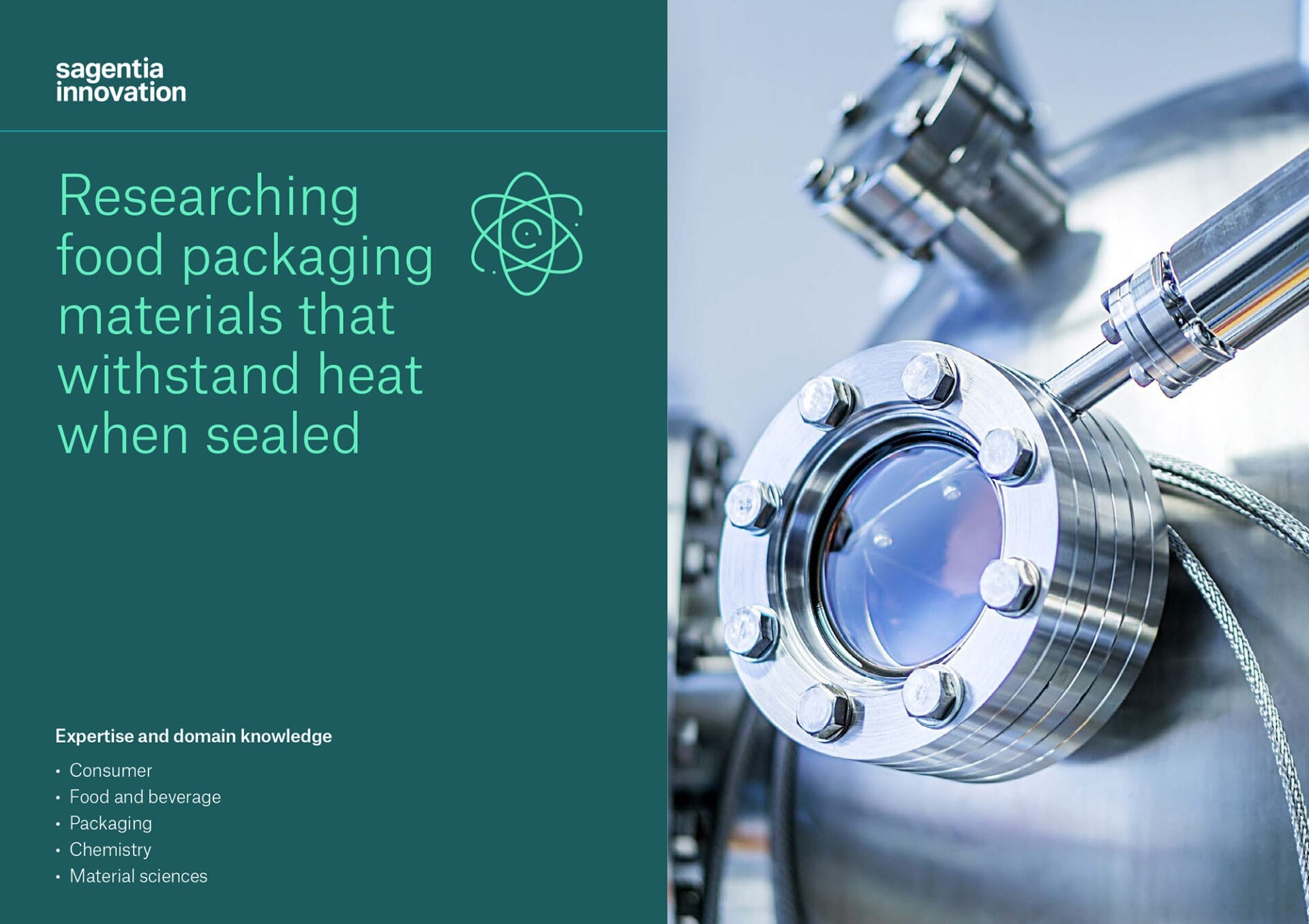Researching food packaging materials that withstand heat when sealed
Our client asked:
Our client sought a plastic packaging material that could survive the rigours of their extreme process conditions: high temperature, pressure and particular modified atmosphere sterilisation process. This had to be done without significant changes to its material properties while maintaining hermeticity when heat-sealed to a different material.
The project story:
- Sagentia Innovation started with a literature review to investigate mechanisms of material plasticisation and breakdown to identify promising materials for the challenge
- This was followed by a series of bonding and exposure experiments (some in-person), as well as studies of microscopic/spectroscopic features and water vapour/oxygen barrier properties, to confirm or dismiss candidates
- The work programme also touched on aspects of final package design and mass manufacture (e.g. heat-sealing, printing)
Results: deliverables and outcomes
In addition to a summary of test results, a 150-page report was delivered, including a detailed study of the scientific literature, thorough microscopic and spectroscopic investigations of test samples, and putative engineering diagrams for mass-manufacture of the final package. Of ~75 initial material candidates, just two nanomaterials adequately resisted the extreme process conditions, and no single material fulfilled all the client’s needs. However, one mono-material met enough of the client’s criteria to be carried forward into the next phase of product development. This project was vitally important in guiding the client’s learning process concerning how materials change in response to their sterilisation technique. The findings from this project will inform their final packaging design.
Expertise and domain knowledge
- Consumer
- Food and beverage
- Packaging
- Chemistry
- Material sciences

